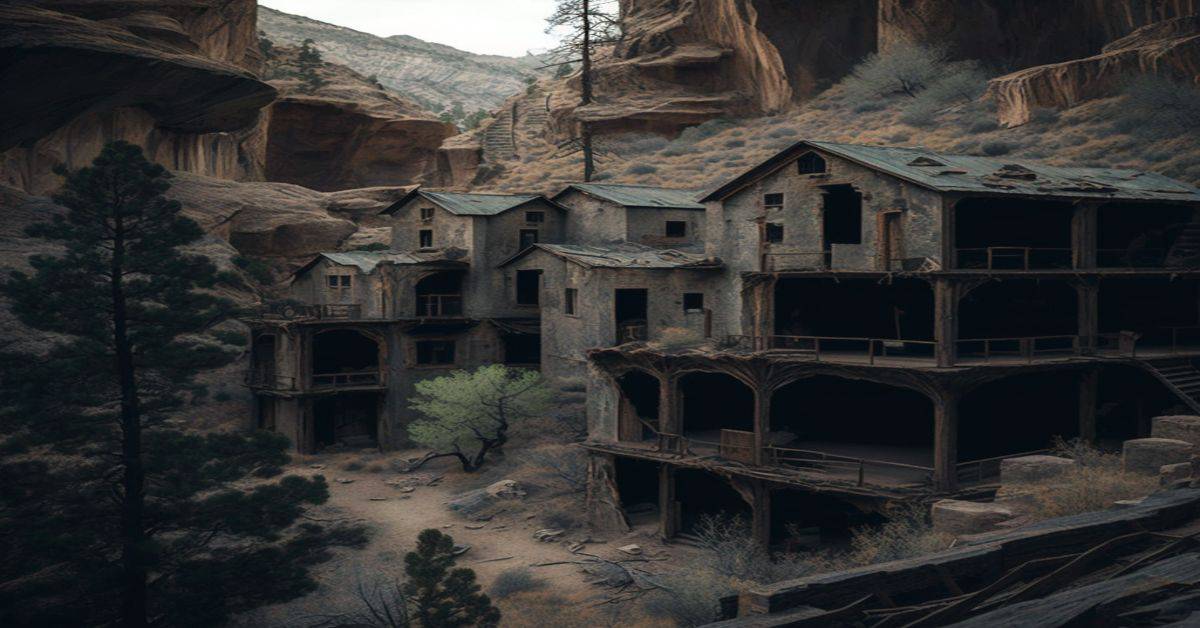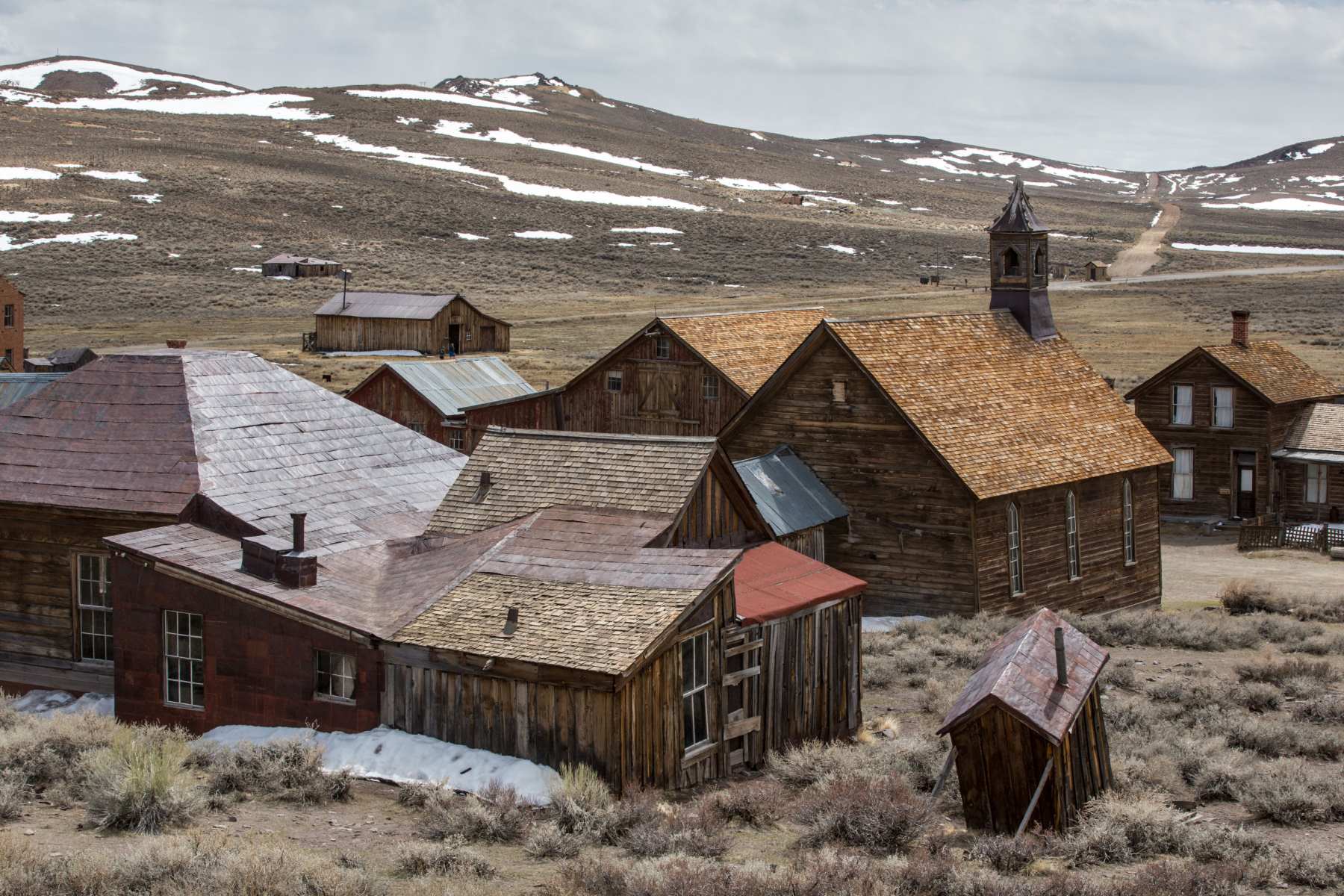
Echoes in the Dust: Unearthing Utah’s Vanished Ghost Towns
The Utah landscape, a tapestry woven from red rock canyons, towering peaks, and vast, arid plains, holds more than just geological wonders. Scattered across its diverse terrain are silent sentinels of a bygone era: the ghost towns. These spectral communities, once vibrant hubs of human endeavor and ambition, now stand as stark monuments to the ephemeral nature of boom-and-bust cycles, the harsh realities of the frontier, and the relentless march of time. Visiting them is not merely a sightseeing trip; it’s a journey into the past, a whisper from the wind carrying tales of dreams, toil, and ultimate abandonment.
Utah’s unique history laid fertile ground for the birth and eventual demise of hundreds of these settlements. Unlike many western states, initial large-scale colonization began with the arrival of the Mormon pioneers in 1847, seeking religious freedom and establishing an agrarian commonwealth. Their industriousness saw the rapid spread of settlements, often centered around irrigation and self-sufficiency. However, it was the discovery of precious minerals – silver, gold, copper, and coal – that truly ignited the boom. After the completion of the Transcontinental Railroad in 1869 at Promontory Summit, Utah became a crossroads, opening its mineral wealth to the nation and attracting a diverse, often non-Mormon, population of miners, prospectors, and entrepreneurs. This influx led to a flurry of mining camp constructions, many of which were destined for a brief, fiery existence.
“Utah’s ghost towns are a unique reflection of its dual identity,” explains Dr. Eleanor Vance, a historian specializing in Western American studies. “You have the planned, resilient Mormon agricultural settlements, some of which struggled and faded, but then you have the explosive, often chaotic mining camps. These mineral towns were built on hope and greed, and when the ore ran out, or the prices crashed, they vanished almost as quickly as they appeared.”

One of the most compelling narratives is that of Silver Reef. Tucked away in southwestern Utah, near St. George, Silver Reef stands out because it was a silver mining town in an area largely known for iron and copper, and crucially, it was founded and populated predominantly by non-Mormons in a heavily Latter-day Saint territory. Discovered in 1874, the town quickly boomed, reaching a population of around 2,000. It boasted banks, saloons, hotels, and its own newspaper, the Silver Reef Miner. The town was notorious for its rough-and-tumble character, a stark contrast to the pious, industrious communities surrounding it.
The irony of Silver Reef was that the silver was found in sandstone, a geological anomaly that confounded early prospectors. Once the unique geology was understood, the rush was on. Millions of dollars in silver were extracted, but by the mid-1880s, the mines began to play out, and a drop in silver prices sealed its fate. Fires, a common scourge of wooden mining towns, also took their toll. Today, the Wells Fargo building, the old cemetery, and various foundations remain, alongside a small museum that preserves its colorful, almost rebellious, history. It’s a powerful reminder that even in a religiously homogenous state, the lure of wealth could create its own distinct, transient culture.
Further north, high in the Oquirrh Mountains, lies Ophir. Named after the biblical land of gold, Ophir epitomized the classic silver and gold mining camp. Founded in 1870, it quickly grew to house thousands, with bustling streets, numerous saloons, and a reputation for lively, if not lawless, weekends. The sheer difficulty of extracting ore from such rugged terrain, coupled with harsh winters, added to the challenges. While it saw several booms and busts, eventually the richest veins were depleted, and the town slowly withered. Today, a few sturdy brick and stone buildings, including the old city hall, endure, clinging to the mountainside, watched over by the enormous modern Bingham Canyon Mine in the distance – a stark contrast between old and new mining techniques.
The story of Mercur, located in Tooele County, is one of resilience and reinvention. Originally a gold camp in the 1870s, it struggled until the introduction of the cyanide process in the 1890s revolutionized gold extraction from low-grade ores. This technological leap gave Mercur a second, even bigger boom. It became one of Utah’s most significant gold producers, even boasting the first successful long-distance transmission of alternating current electricity in Utah for its mills. But like all resource-dependent towns, its fate was tied to the earth. Repeated fires devastated the town, and eventually, the ore played out. Mercur was officially abandoned in 1913, its legacy cemented by innovation and a fierce, if ultimately futile, fight against depletion.
Not all ghost towns were born of mining. Some were agricultural settlements, often Mormon pioneer communities that faced insurmountable odds. Grafton, near Zion National Park, is perhaps the most picturesque and well-preserved example of this type. Established in 1859, its inhabitants struggled against the fickle Virgin River, which alternately flooded and dried up, destroying crops and homes. Indigenous raids also posed a constant threat. Despite their tenacity, including rebuilding the town multiple times after floods, the challenges proved too great. By the early 20th century, the last families had moved on, seeking more hospitable land.
Grafton’s appeal today is undeniable. Its beautifully preserved red brick schoolhouse, a few homes, and a pioneer cemetery stand against the backdrop of towering sandstone cliffs, looking much as they did over a century ago. Its fame was cemented by its appearance in classic Western films, including Butch Cassidy and the Sundance Kid. “Grafton isn’t just ruins; it’s a testament to human resilience and a call to preserve our past,” says Sarah Jensen, a volunteer with the Grafton Heritage Partnership. “It shows the incredible effort it took to simply survive in this land.” The town is now protected, a quiet, poignant reminder of the struggles of early Utah settlers.
Further east, along I-70, lies Cisco, a railroad town that gained notoriety not for its wealth, but for its desolation. Established as a watering stop and service station for the Denver and Rio Grande Western Railroad in the 1880s, Cisco once had stores, hotels, and a post office. But with the advent of diesel locomotives and improved highways, its purpose dwindled. Today, Cisco is a collection of derelict shacks, rusting vehicles, and a general store that looks perpetually closed. It’s less a picturesque ruin and more a stark, gritty representation of decline, almost like a set piece from a post-apocalyptic film – a reputation it earned by being featured in movies like Vanishing Point and Thelma & Louise. It’s a reminder that not all decline is romanticized; some are simply desolate.
The reasons for Utah’s ghost towns fading into obscurity are multi-faceted, yet follow common patterns:

- Resource Depletion: The most common cause. When the gold, silver, or coal ran out, the very reason for a town’s existence vanished.
- Economic Shifts: Drops in commodity prices could make mining unprofitable overnight, leading to mass exodus.
- Technological Advancements: Changes in transportation (e.g., diesel trains replacing steam, or highways bypassing rail lines) or mining methods could render towns obsolete.
- Natural Disasters: Fires, floods, and even epidemics frequently wiped out towns that lacked robust infrastructure or medical care.
- Isolation and Harsh Conditions: Many towns were in remote, inhospitable areas, making daily life incredibly difficult and hindering economic diversification.
- Water Scarcity or Over-abundance: For agricultural towns, the availability and management of water were existential issues.
The allure of these forgotten places is profound. For photographers, they offer unparalleled opportunities for capturing evocative images of decay and beauty. For historians and archaeologists, they are open-air museums, holding clues to past lives, technologies, and social structures. For the casual visitor, they provide a tangible connection to the past, a sense of stepping back in time to imagine the lives lived within these now-crumbling walls. The silence, broken only by the wind, invites contemplation on themes of ambition, failure, and the relentless march of progress.
“There’s a profound beauty in their desolation,” observes landscape photographer Mark Jenkins, who has spent years documenting Utah’s ghost towns. “Each peeling paint, each rusted artifact, each collapsing roof tells a story. They are a powerful counter-narrative to our modern obsession with growth and newness, reminding us that nothing lasts forever.”
As interest in these historical sites grows, so too does the imperative for preservation and respectful visitation. The delicate balance between allowing access and protecting these fragile remnants is crucial. Visitors are often reminded of the “leave no trace” ethos: take only photographs, leave only footprints. Removing artifacts, defacing structures, or disturbing graves robs future generations of the chance to experience these unique windows into history.
Utah’s ghost towns are more than just ruins; they are time capsules. They are the spectral echoes of human endeavor, testaments to the fierce determination, ingenuity, and sometimes folly, of those who sought to carve out a living from this challenging land. They stand as silent sentinels, whispering tales of booms and busts, hopes and heartbreaks, inviting all who visit to listen closely to the wind and remember the vibrant lives that once filled their now-empty streets. In their enduring silence, they speak volumes about the American West, the pioneering spirit, and the ceaseless cycles of creation and decay.


